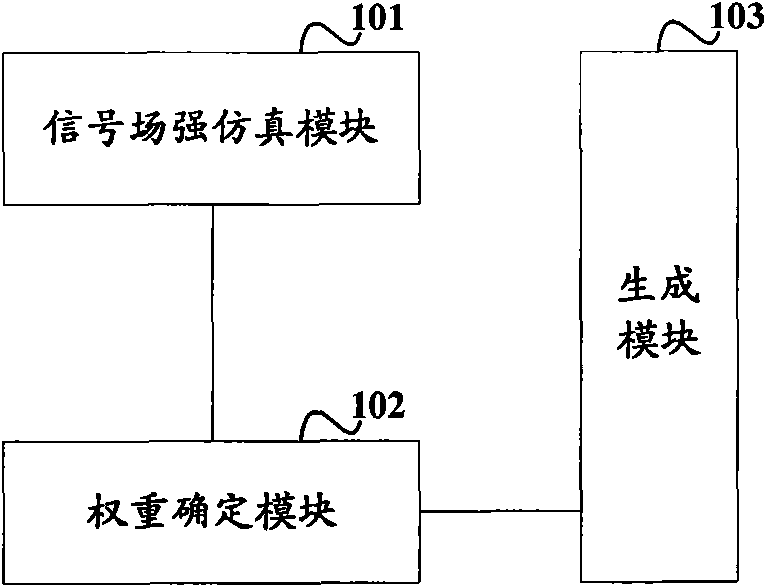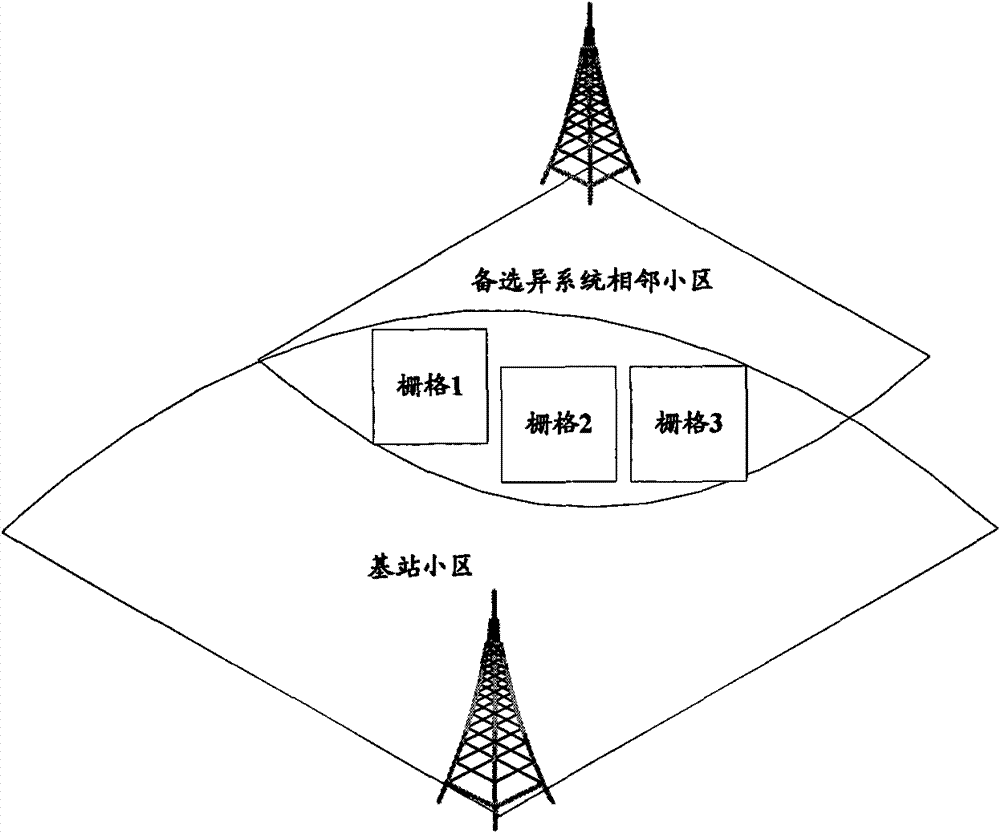Inter-system neighbor cell generating method and device
A technology of adjacent cells and adjacent cell lists, applied in electrical components, wireless communications, etc., can solve problems such as the inability to configure adjacent cells, and achieve the effects of accelerating network configuration efficiency, improving network performance, and shortening the generation cycle
- Summary
- Abstract
- Description
- Claims
- Application Information
AI Technical Summary
Problems solved by technology
Method used
Image
Examples
Embodiment 1
[0038] The embodiment of the present invention first proposes: based on the signal field strength simulation results, the generation of adjacent cells between different systems is realized. Use the signal field strength simulation module to determine the signal field strength of each grid in the coverage area of the base station cell in the home system and the different system; determine the alternative different system adjacent cells, and consider each alternative different system adjacent cell For the overlapping area of the base station cells, determine the weight of each candidate different-system adjacent cell; select the different-system adjacent cell according to the weight of the candidate different-system adjacent cell, and generate a list of different-system adjacent cells of the base station cell.
[0039] Such as figure 1 As shown, the embodiment of the present invention provides an apparatus for generating adjacent cells between different systems, including: ...
Embodiment 2
[0129] On the basis of the solution provided by the first embodiment, the embodiment of the present invention further proposes: on the premise of the signal field strength simulation results, the generation of adjacent cells between different systems is realized in combination with the geographical conditions of the base station.
[0130] Such as Figure 8 As shown, the embodiment of the present invention provides another method for generating adjacent cells between different systems, including the following steps:
[0131] S801. Determine the first signal field strength in the home system and the second signal field strength in the foreign system of each grid within the cell coverage of the base station;
[0132] S802. Determine that the different-system cell overlapping with the coverage of the base station cell is a candidate different-system adjacent cell, according to the first signal field strength and the second signal field strength of each grid in the overlapping area...
PUM
 Login to View More
Login to View More Abstract
Description
Claims
Application Information
 Login to View More
Login to View More - R&D
- Intellectual Property
- Life Sciences
- Materials
- Tech Scout
- Unparalleled Data Quality
- Higher Quality Content
- 60% Fewer Hallucinations
Browse by: Latest US Patents, China's latest patents, Technical Efficacy Thesaurus, Application Domain, Technology Topic, Popular Technical Reports.
© 2025 PatSnap. All rights reserved.Legal|Privacy policy|Modern Slavery Act Transparency Statement|Sitemap|About US| Contact US: help@patsnap.com



